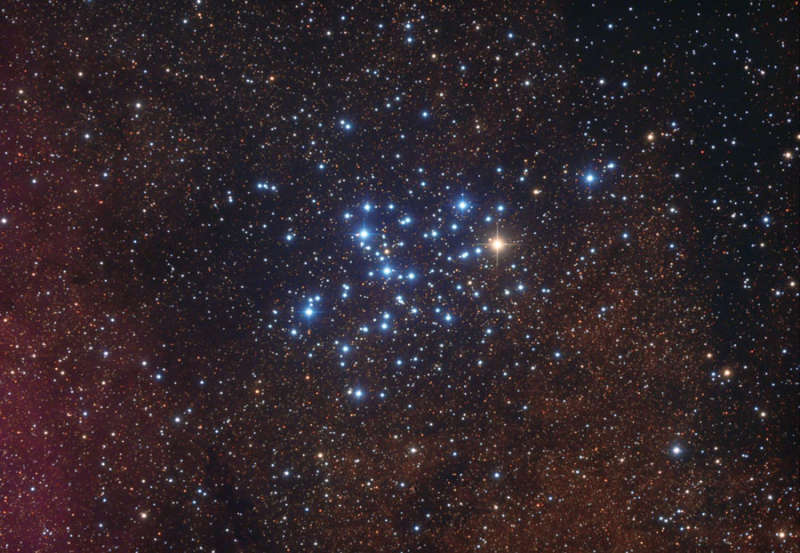Credit & Copyright: Sergio Eguivar
Buenos Aires Skies
Explanation:
To some, the outline of the open cluster of stars M6 resembles a butterfly.
M6, also known as NGC 6405,
spans about 20 light-years and lies about
2,000 light years distant.
M6 can best be seen in a dark sky with binoculars
towards the constellation of Scorpius, coving about as much of the sky as the
full moon.
Like other open clusters, M6 is composed predominantly of
young blue stars,
although the brightest star is nearly orange.
M6 is estimated to be about 100 million years old.
Determining the distance to clusters like
M6 helps astronomers calibrate the distance scale of the universe.
APOD Retrospective:
Open Star Clusters
Authors & editors:
Robert Nemiroff
(MTU) &
Jerry Bonnell
(USRA)
NASA Web Site Statements, Warnings,
and Disclaimers
NASA Official: Jay Norris.
Specific
rights apply.
A service of:
LHEA at
NASA /
GSFC
& Michigan Tech. U.
Based on Astronomy Picture
Of the Day
